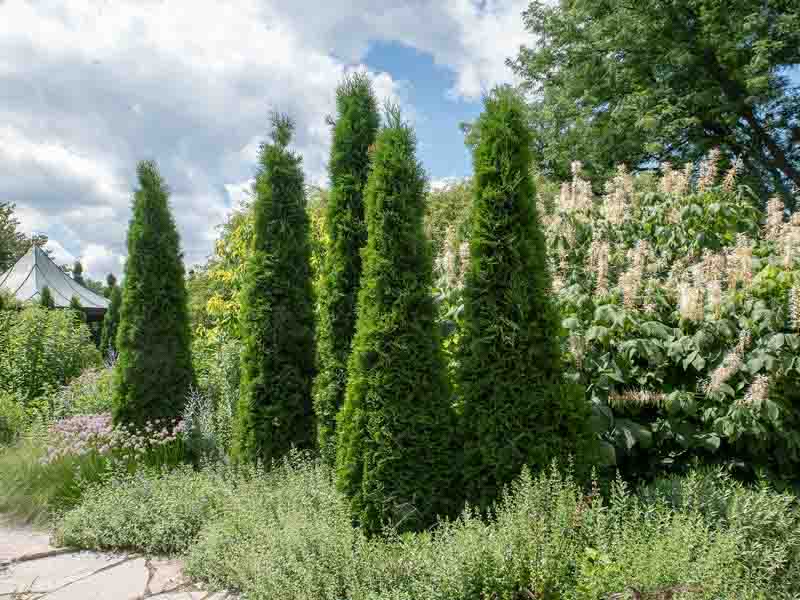Northern White Cedar: A Hardy Evergreen for Gardens
Northern White Cedar (Thuja occidentalis), also known as Eastern White Cedar, is a resilient and versatile evergreen tree belonging to the cypress family.
Species: Thuja occidentalis is a prominent species in the Thuja genus, widely recognized for its ornamental and utilitarian value. This species stands out for its unique growth habits and foliage, leading to various cultivars suited to different landscaping needs.
Native: Native to eastern North America, it’s commonly found in the northeastern United States and southeastern Canada. Its natural habitats range from wetlands to rocky terrains, demonstrating its impressive adaptability.
Habit: In its natural state, Northern White Cedar typically grows with a conical to columnar habit, forming a slender, upright tree. However, many cultivated varieties offer a range of shapes, from compact and globular to pyramidal, catering to diverse landscape applications.
Hardiness: This species thrives in USDA hardiness zones 2 to 7, showcasing remarkable cold tolerance, making it a staple in northern landscapes.
Foliage: It features dense, scale-like leaves arranged in flat sprays with a rich green hue that may acquire a bronze tinge in colder winters. This dense foliage renders the tree an evergreen visual delight.
Uses: Northern White Cedar is highly sought after for creating privacy screens, hedges, and windbreaks. It’s also popular for topiary and ornamental purposes due to its dense foliage and ease of shaping.
Benefits: Apart from its aesthetic allure, it offers year-round privacy, wind protection, and is low-maintenance. It provides habitat for wildlife, serving as shelter and nesting space.

